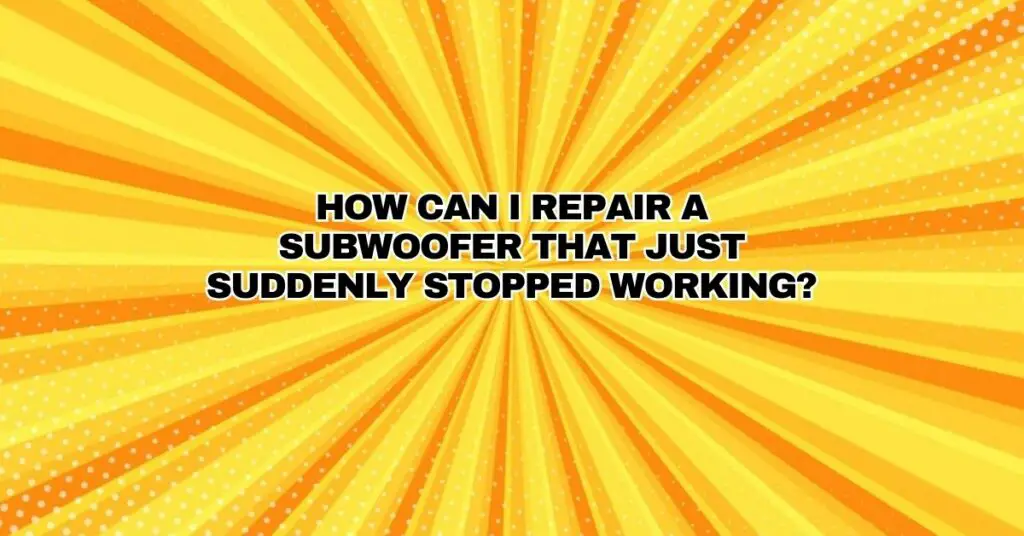A subwoofer is a vital component of any audio system, responsible for delivering powerful and immersive bass that enhances your listening experience. However, it can be distressing when your subwoofer suddenly stops working, leaving you with incomplete sound. In this comprehensive article, we’ll explore the common reasons behind a subwoofer’s sudden failure and provide a step-by-step guide to diagnosing and repairing the issue.
Understanding the Problem
Before we delve into the solutions, it’s important to understand why a subwoofer might suddenly stop working:
1. Power Issues
The subwoofer might not be receiving power due to a blown fuse, a loose power cable, or a faulty power source. Power issues are a common cause of sudden subwoofer failure.
2. Amplifier Problems
If the amplifier powering the subwoofer experiences issues like overheating, a blown channel, or internal damage, it can lead to subwoofer failure.
3. Wiring and Connection Problems
Loose or damaged wires, faulty connections, or incorrect wiring can disrupt the signal sent to the subwoofer, leading to a loss of sound.
4. Voice Coil Damage
The voice coil, a critical component within the subwoofer, can become damaged over time due to overheating or mechanical stress. When the voice coil is compromised, it can cause the subwoofer to stop working.
Diagnosing and Repairing a Non-Functioning Subwoofer
Now, let’s explore a step-by-step guide to diagnose and repair a subwoofer that has suddenly stopped working:
1. Check the Power Source
- Ensure the subwoofer is properly connected to a working power source. Check if the power cable is secure.
- Verify that the subwoofer’s power switch is in the “On” position and that any power indicator lights are illuminated.
2. Examine the Amplifier
- Check the amplifier that powers the subwoofer. Ensure that it’s operational and that there are no warning lights or overheating issues.
- Review the amplifier’s settings, including gain, crossover, and volume, to make sure they’re appropriately configured.
3. Test the Wiring and Connections
- Carefully inspect all the wires and connections leading to the subwoofer. Look for loose or damaged wires.
- Reconnect any disconnected wires, tighten loose connections, and replace damaged cables as needed.
4. Check for Voice Coil Damage
- Play a low-frequency test tone through the subwoofer at a moderate volume.
- Listen for any unusual sounds, such as scraping, grinding, or rattling. These sounds may indicate damaged voice coils.
5. Test the Subwoofer with a Different Source
- Disconnect the subwoofer from its current audio source and connect it to a different one. This will help determine if the issue lies with the source or the subwoofer.
6. Verify Internal Subwoofer Settings
- Check for any internal settings on the subwoofer itself, such as phase and crossover settings. Ensure that these settings are appropriately configured for your audio system.
7. Seek Professional Assistance
- If the issue persists, or if you’re unsure about diagnosing or repairing the problem, consider consulting a professional audio technician. They have the expertise to diagnose and fix complex issues.
Conclusion
Experiencing a subwoofer that suddenly stops working can be distressing, but with the right troubleshooting and care, many of these issues can be resolved. Regular maintenance, proper setup, and attention to wiring and power supply are essential for preventing subwoofer failure and ensuring your audio system consistently delivers the deep, resonant bass you desire. By following the steps outlined in this article, you can diagnose and fix the problem and enjoy uninterrupted, immersive bass in your audio system


